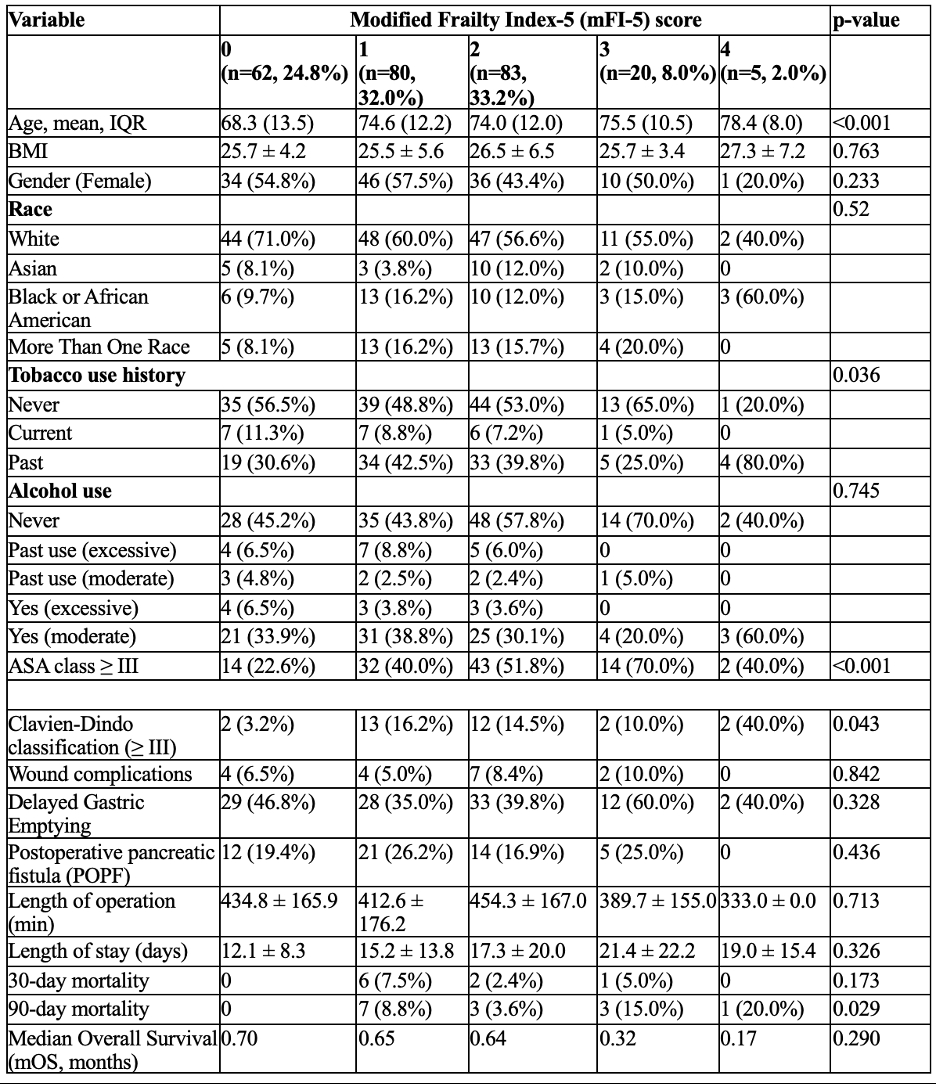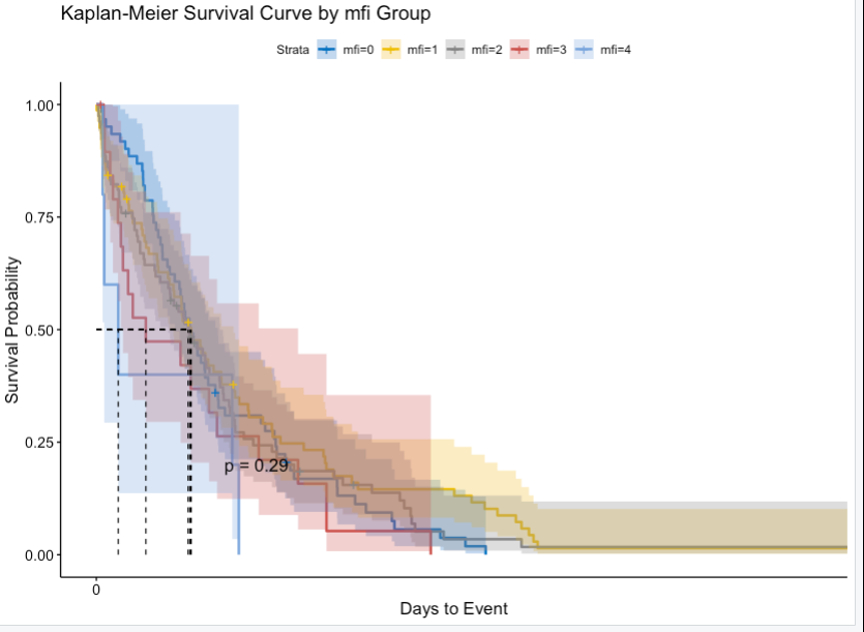Background
Pancreatic Ductal Adenocarcinoma (PDAC) predominantly affects older individuals who often exhibit diminished physiological reserves. The Modified 5-Item Frailty Index (mFI-5) is a novel and concise risk stratification tool, proposed as an effective predictor of postoperative morbidity and mortality. We aimed to validate the use of mFI-5 to predict surgical outcomes in patients undergoing pancreaticoduodenectomy (PD) for PDAC.
Methods
Our institutional retrospective PDAC database was queried for patients who underwent pancreaticoduodenectomy (PD) between 2009-2023. Patients were stratified into groups based on their mFI-5 scores (0 best - 5 worst). The mFI-5 incorporates assessments of preoperative CHF within the last 30 days, diabetes mellitus, a history of COPD or pneumonia, functional health status at the time of surgery (ranging from partially to fully dependent), and hypertension requiring medication, assigning 1 point to each condition (range 0-5). One-way ANOVA and Chi-squared test were used as appropriate to detect differences across mFI-5 categories. Differences in survival were estimated with log-rank approximations.
Results
Of 250 PDAC patients who underwent PD, 142 (56.8%) had a mFI-5 score ? 1 and only 25 (10%) had a score ? 3 (Table 1). No patient had mFI-5 > 4. Patients with higher mFI-5 were older (p < 0.001), more likely to be active tobacco users (p = 0.036), and had worse ASA class (p < 0.001). Other baseline characteristics such as BMI, gender, race, alcohol use, were similar across mFI-5 groups. Post-operatively, a higher mFI-5 score was associated with increased Clavien-Dindo ? III complications (p = 0.043) and 90-day mortality (p = 0.029). While a higher mFI-5 was associated with an increased risk of overall complications, wound complications, delayed gastric emptying, POPF, length of operation, length of stay, and 30-day mortality were similar across mFI-5 categories.Worse mFI-5 trended toward decreased overall survival (p=0.290, Figure 1).
Conclusions
In our institution, a higher mFI-5 was associated with an increased risk of severe postoperative complications, and 90-day mortality in PDAC patients undergoing PD.
However, mFI-5 was not associated with any specific postoperative event. Additional studies, with a larger number of patients with mFI-5 > 2 may be able to demonstrate an association of mFI-5 with specific post-operative events.

Table 1. Correlation of Modified Frailty Index-5 (mFI-5) Scores with Perioperative Factors in Pancreaticoduodenectomy Patients.

Figure 1. Kaplan Meier curve stratified according to mFI-5 Classifications.